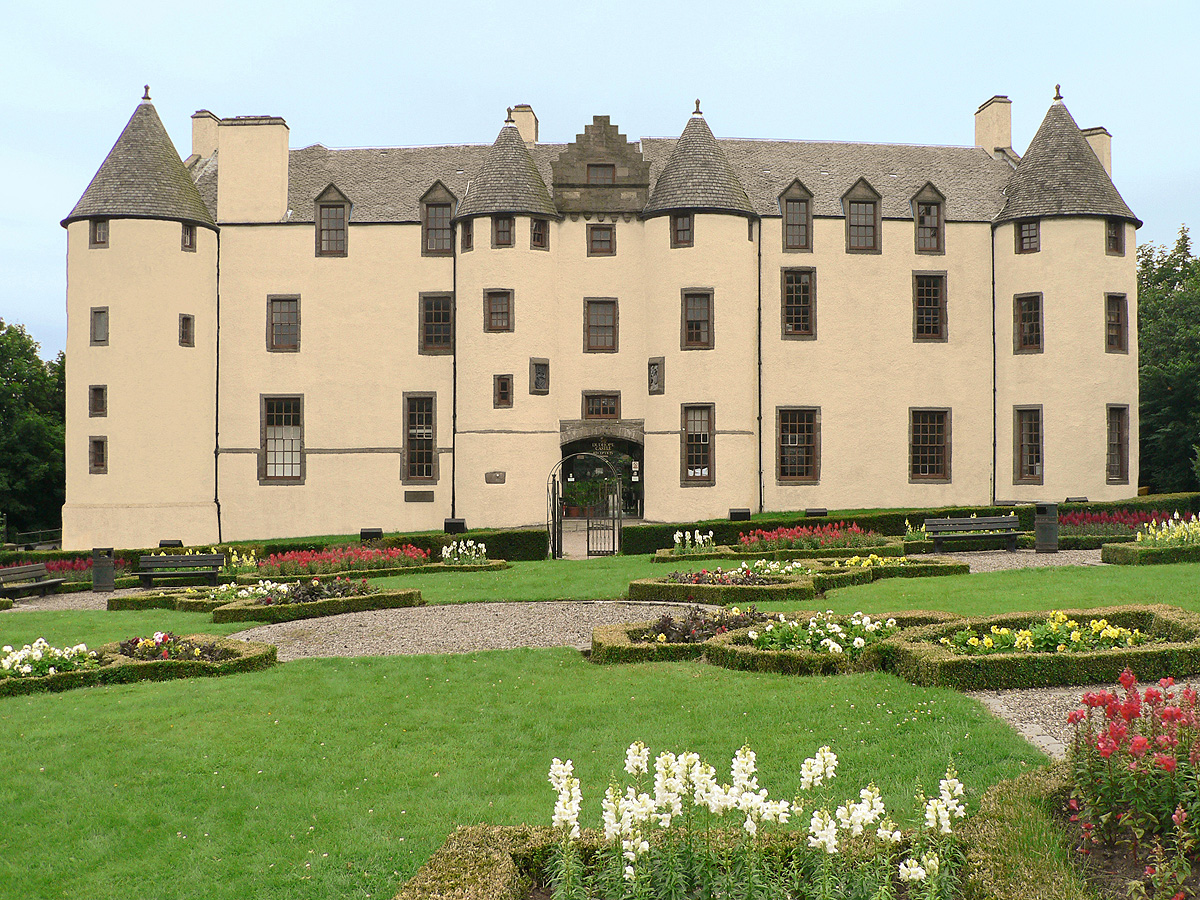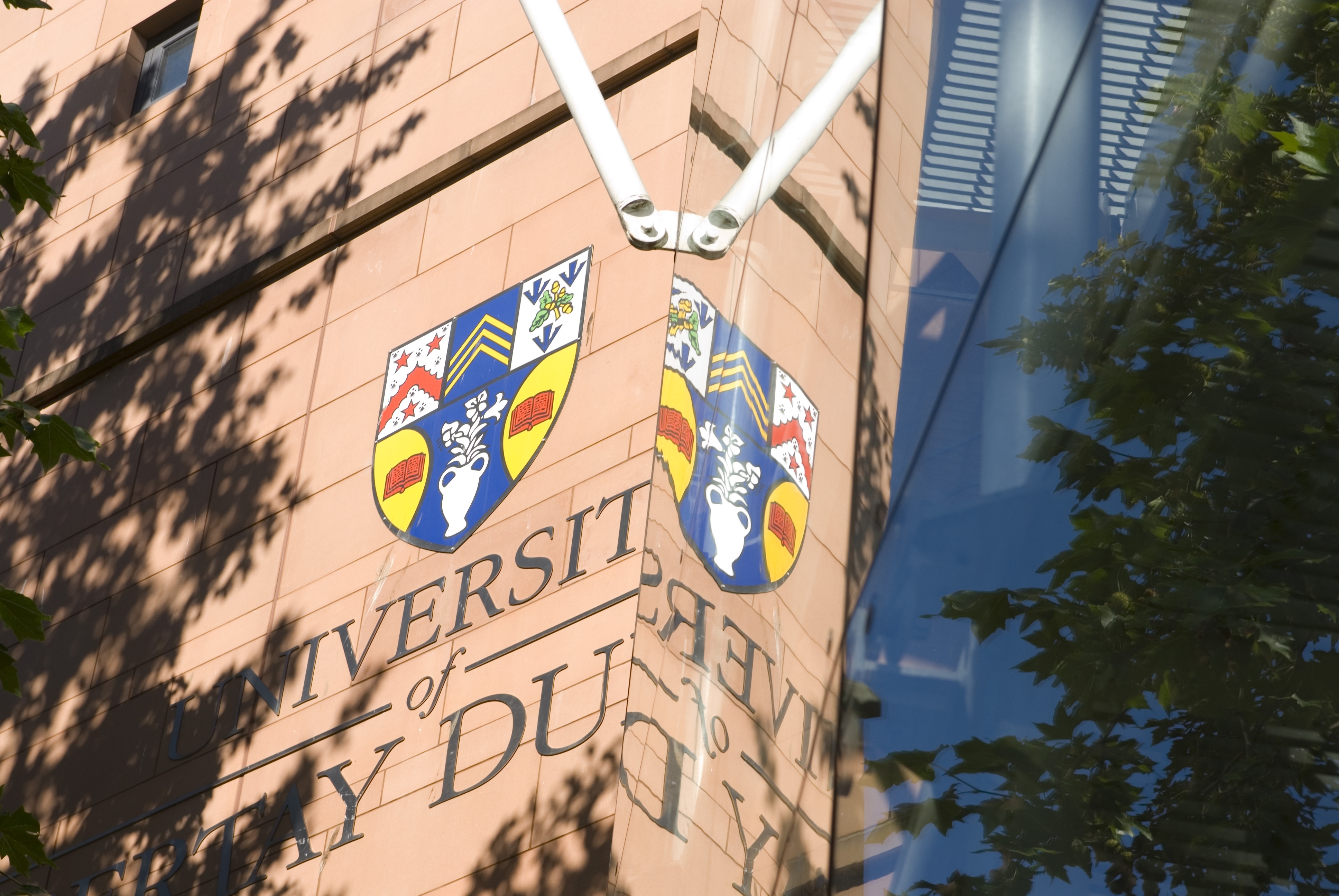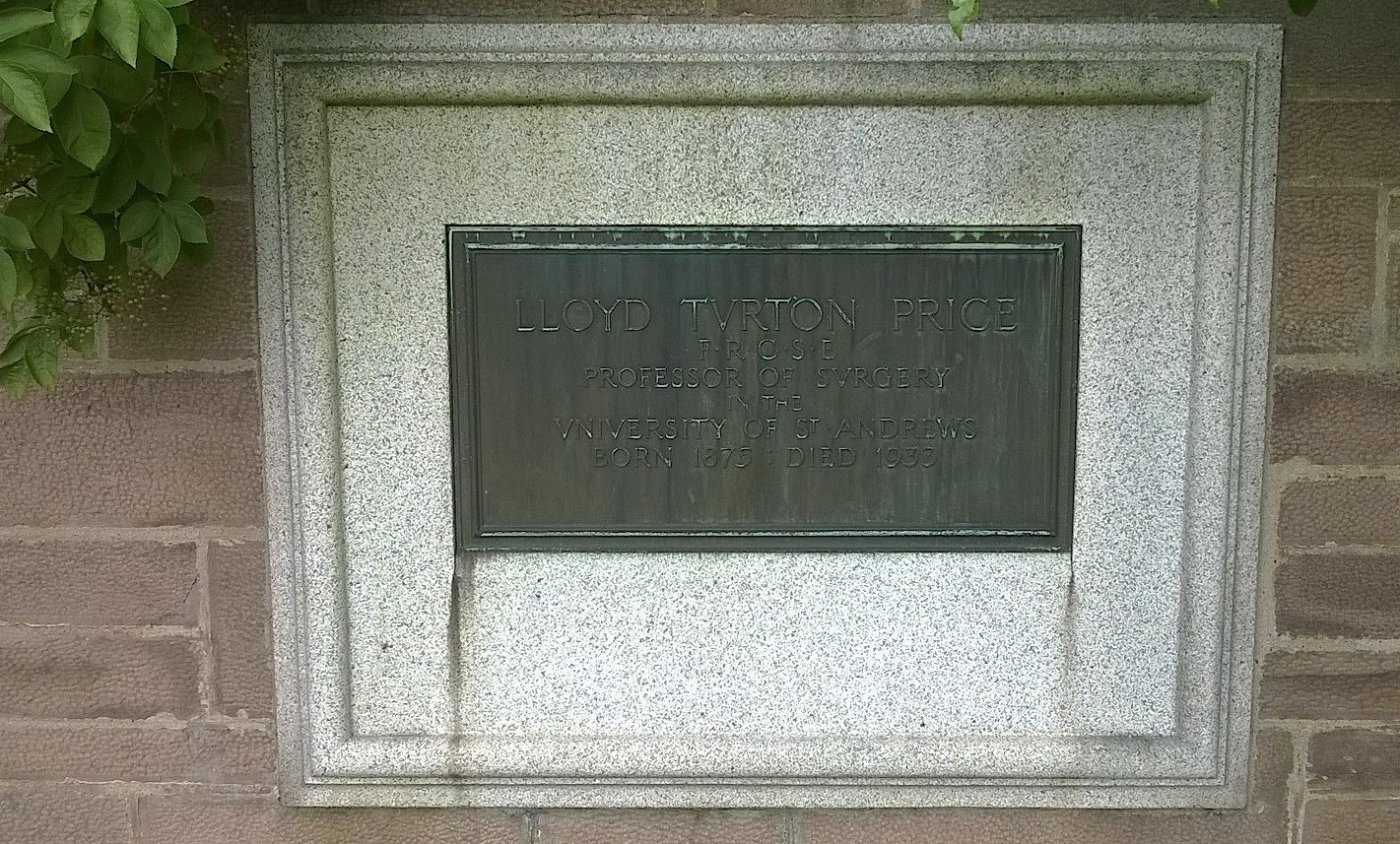|
Dudhope Castle
Dudhope Castle is an extended late medieval tower house located on the southern face of Dundee Law in Dundee, Scotland. History Construction and private ownership The castle was originally built in the late 13th century by the Scrymgeour family, with the original castle being a smaller tower house. This was replaced around 1460. James V visited in April 1540. The castle was further extended in 1580 for James Scrimgeour and Magdalen Livingstone to its current L-plan structure with additional circular "angle" towers, although these were demolished in the 18th century. James VI and I stayed at Dudhope on 20 May 1617. On the death in 1668 of John Scrimgeour, 13th The Story of Dudhope Castle. Published by the Dudhope Castle Fund Committee 1959 (or 14th)Historic Dundee by Colin Gibson. Published in aid of the Dudhope Castle Restoration Fund c. 1959 Constable, and first Earl of Dundee, King Charles II ignored the existence of the rightful heir, John Scrimgeour of Kirkton, and ... [...More Info...] [...Related Items...] OR: [Wikipedia] [Google] [Baidu] |
Dudhope Castle
Dudhope Castle is an extended late medieval tower house located on the southern face of Dundee Law in Dundee, Scotland. History Construction and private ownership The castle was originally built in the late 13th century by the Scrymgeour family, with the original castle being a smaller tower house. This was replaced around 1460. James V visited in April 1540. The castle was further extended in 1580 for James Scrimgeour and Magdalen Livingstone to its current L-plan structure with additional circular "angle" towers, although these were demolished in the 18th century. James VI and I stayed at Dudhope on 20 May 1617. On the death in 1668 of John Scrimgeour, 13th The Story of Dudhope Castle. Published by the Dudhope Castle Fund Committee 1959 (or 14th)Historic Dundee by Colin Gibson. Published in aid of the Dudhope Castle Restoration Fund c. 1959 Constable, and first Earl of Dundee, King Charles II ignored the existence of the rightful heir, John Scrimgeour of Kirkton, and ... [...More Info...] [...Related Items...] OR: [Wikipedia] [Google] [Baidu] |
John Graham Of Claverhouse
John Graham, 7th of Claverhouse, 1st Viscount Dundee (21 July 1648 – 27 July 1689) was a Scottish soldier and nobleman, a Tory and an Episcopalian. He was responsible for policing southwest Scotland during and after the religious unrest and rebellion of the late 17th century, and went on to lead the Jacobite rising of 1689. After his death, Presbyterian historians dubbed him "Bluidy Clavers". Contemporary evidence for the fairness of this soubriquet in the Covenanting tradition is mixed. Tales of the Covenanters and Covenanter monuments hold Claverhouse directly responsible for the deaths of adherents of that movement. However, Claverhouse's own letters frequently recommended lenient treatment of Covenanters,Letters of John Grahame of Claverhouse, Viscount of Dundee – James Bannatyne, Edinburgh (1824) and in 1684 he married into a prominent Covenanter family. Later, as a general in the Scottish army, Claverhouse remained loyal to King James VII of Scotland after the Revol ... [...More Info...] [...Related Items...] OR: [Wikipedia] [Google] [Baidu] |
Castles In Dundee
A castle is a type of fortification, fortified structure built during the Middle Ages predominantly by the nobility or royalty and by Military order (monastic society), military orders. Scholars debate the scope of the word ''castle'', but usually consider it to be the private fortified house, fortified residence of a lord or noble. This is distinct from a palace, which is not fortified; from a fortress, which was not always a residence for royalty or nobility; from a ''pleasance'' which was a walled-in residence for nobility, but not adequately fortified; and from a fortified settlement, which was a public defence – though there are many similarities among these types of construction. Use of the term has varied over time and has also been applied to structures such as hill forts and 19th-20th century homes built to resemble castles. Over the approximately 900 years when genuine castles were built, they took on a great many forms with many different features, although s ... [...More Info...] [...Related Items...] OR: [Wikipedia] [Google] [Baidu] |
Robert The Bruce
Robert I (11 July 1274 – 7 June 1329), popularly known as Robert the Bruce (Scottish Gaelic: ''Raibeart an Bruis''), was King of Scots from 1306 to his death in 1329. One of the most renowned warriors of his generation, Robert eventually led Scotland during the First War of Scottish Independence against England. He fought successfully during his reign to regain Scotland's place as an independent kingdom and is now revered in Scotland as a national hero. Robert was a fourth great-grandson of King David I, and his grandfather, Robert de Brus, 5th Lord of Annandale, was one of the claimants to the Scottish throne during the "Great Cause". As Earl of Carrick, Robert the Bruce supported his family's claim to the Scottish throne and took part in William Wallace's revolt against Edward I of England. Appointed in 1298 as a Guardian of Scotland alongside his chief rival for the throne, John Comyn of Badenoch, and William Lamberton, Bishop of St Andrews, Robert resigned in 13 ... [...More Info...] [...Related Items...] OR: [Wikipedia] [Google] [Baidu] |
William Wallace
Sir William Wallace ( gd, Uilleam Uallas, ; Norman French: ; 23 August 1305) was a Scottish knight who became one of the main leaders during the First War of Scottish Independence. Along with Andrew Moray, Wallace defeated an English army at the Battle of Stirling Bridge in September 1297. He was appointed Guardian of Scotland and served until his defeat at the Battle of Falkirk in July 1298. In August 1305, Wallace was captured in Robroyston, near Glasgow, and handed over to King Edward I of England, who had him hanged, drawn and quartered for high treason and crimes against English civilians. Since his death, Wallace has obtained an iconic status far beyond his homeland. He is the protagonist of Blind Harry's 15th-century epic poem '' The Wallace'' and the subject of literary works by Jane Porter and Sir Walter Scott, and of the Academy Award-winning film ''Braveheart''. Background William Wallace was a member of the lesser nobility, but little is definitely kno ... [...More Info...] [...Related Items...] OR: [Wikipedia] [Google] [Baidu] |
University Of Abertay Dundee
, mottoeng = "Blessed is the one who finds wisdom." , established = 1994 – granted University Status 1888 – Dundee Institute of Technology , type = Public , chancellor = Alice Brown , principal = Liz Bacon , head_label = Chair of Court , head = Murray Shaw , city = Dundee , country = Scotland, UK , coor = , academic_staff = 208 , administrative_staff = 300 , students = 3,824 , undergrad = 3,501 , postgrad = 213 , affiliations = Million+ GuildHE Universities Scotland , colours = Blue, Red, Gold and Green , website = , logo = Abertay University logo.png Abertay University ( gd, Oilthigh Obar Thatha ), formerly the University of Abertay Dundee, is a public university in the city of Dundee, Scotland. In 1872, Sir David Baxter, 1st Baronet of Kilmaron, left a bequest for the establishment of a mechanics' institute in Dundee and the Dundee Institute of Technology was formed in 1888. As early as 1902 it was recognised by the Scottish Education Department a ... [...More Info...] [...Related Items...] OR: [Wikipedia] [Google] [Baidu] |
Shell-shock
Shell shock is a term coined in World War I by the British psychologist Charles Samuel Myers to describe the type of post-traumatic stress disorder (PTSD) many soldiers were afflicted with during the war (before PTSD was termed). It is a reaction to the intensity of the bombardment and fighting that produced a helplessness appearing variously as panic and being scared, flight, or an inability to reason, sleep, walk or talk. During the war, the concept of shell shock was ill-defined. Cases of "shell shock" could be interpreted as either a physical or psychological injury, or as a lack of moral fibre. The term ''shell shock'' is still used by the United States’ Department of Veterans Affairs to describe certain parts of PTSD, but mostly it has entered into memory, and it is often identified as the signature injury of the war. In World War II and thereafter, diagnosis of "shell shock" was replaced by that of combat stress reaction, a similar but not identical response to the ... [...More Info...] [...Related Items...] OR: [Wikipedia] [Google] [Baidu] |
Dundee Royal Infirmary
Dundee Royal Infirmary, often shortened to DRI, was a major teaching hospital in Dundee, Scotland. Until the opening of Ninewells Hospital in 1974, Dundee Royal Infirmary was Dundee's main hospital. It was closed in 1998, after 200 years of operation. History Dundee Royal Infirmary's origins lay in a voluntary dispensary founded in Dundee by Dr Robert Stewart and the local minister Robert Small in 1782, building on a similar venture started in 1735. In 1793, it was proposed that an infirmary for indoor patients should be founded. This proposal was realised when the Dundee Infirmary was opened in King Street on 11 March 1798, just under four years after its foundation stone had been laid, with the cost of the building being £1,400. At first, this building housed 56 beds, but it was expanded by the addition of wings between 1825 and 1827 which raised its capacity to 120 beds. The infirmary was granted a royal charter by George III in 1819, after which it became known as t ... [...More Info...] [...Related Items...] OR: [Wikipedia] [Google] [Baidu] |
Ministry Of Works (United Kingdom)
The Ministry of Works was a department of the UK Government formed in 1940, during the Second World War, to organise the requisitioning of property for wartime use. After the war, the ministry retained responsibility for government building projects. In 1962 it was renamed the Ministry of Public Building and Works, and acquired the extra responsibility of monitoring the building industry as well as taking over the works departments from the War Office, Air Ministry and Admiralty. The chief architect of the ministry from 1951 to 1970 was Eric Bedford. In 1970 the ministry was absorbed into the Department of the Environment (DoE), although from 1972 most former works functions were transferred to the largely autonomous Property Services Agency (PSA). Subsequent reorganisation of PSA into Property Holdings was followed by abolition in 1996 when individual government departments took on responsibility for managing their own estate portfolios. History The tradition of building specifi ... [...More Info...] [...Related Items...] OR: [Wikipedia] [Google] [Baidu] |
Terraced Housing
In architecture and city planning, a terrace or terraced house ( UK) or townhouse ( US) is a form of medium-density housing that originated in Europe in the 16th century, whereby a row of attached dwellings share side walls. In the United States and Canada they are also known as row houses or row homes, found in older cities such as Philadelphia, Baltimore, and Toronto. Terrace housing can be found throughout the world, though it is in abundance in Europe and Latin America, and extensive examples can be found in the United Kingdom, United States, Canada, and Australia. The Place des Vosges in Paris (1605–1612) is one of the early examples of the style. Sometimes associated with the working class, historical and reproduction terraces have increasingly become part of the process of gentrification in certain inner-city areas. Origins and nomenclature Though earlier Gothic ecclesiastical examples, such as Vicars' Close, Wells, are known, the practice of building new domesti ... [...More Info...] [...Related Items...] OR: [Wikipedia] [Google] [Baidu] |
Earl Of Home
Earl of Home ( ) is a title in the Peerage of Scotland. It was created in 1605 for Alexander Home of that Ilk, 6th Lord Home. The Earl of Home holds, among others, the subsidiary titles of Lord Home (created 1473), and Lord Dunglass (1605), in the Peerage of Scotland; and Baron Douglas, of Douglas in the County of Lanark (1875) in the Peerage of the United Kingdom. Various Earls of Home have also claimed the title of Lord Hume of Berwick. The Earl is also '' Chief of the Name and Arms of Home'' and ''heir general'' to the House of Douglas. The title ''Lord Dunglass'' is the courtesy title of the eldest son of the Earl. The most famous recent holder of the title was the 14th Earl, Alexander Frederick Douglas-Home, better known as Sir Alec Douglas-Home. After the unexpected resignation of Harold Macmillan, the 14th Earl was named Prime Minister by the monarch. For the first time in over sixty years, a sitting Prime Minister was a member of the House of Lords rather than o ... [...More Info...] [...Related Items...] OR: [Wikipedia] [Google] [Baidu] |








.jpg)
